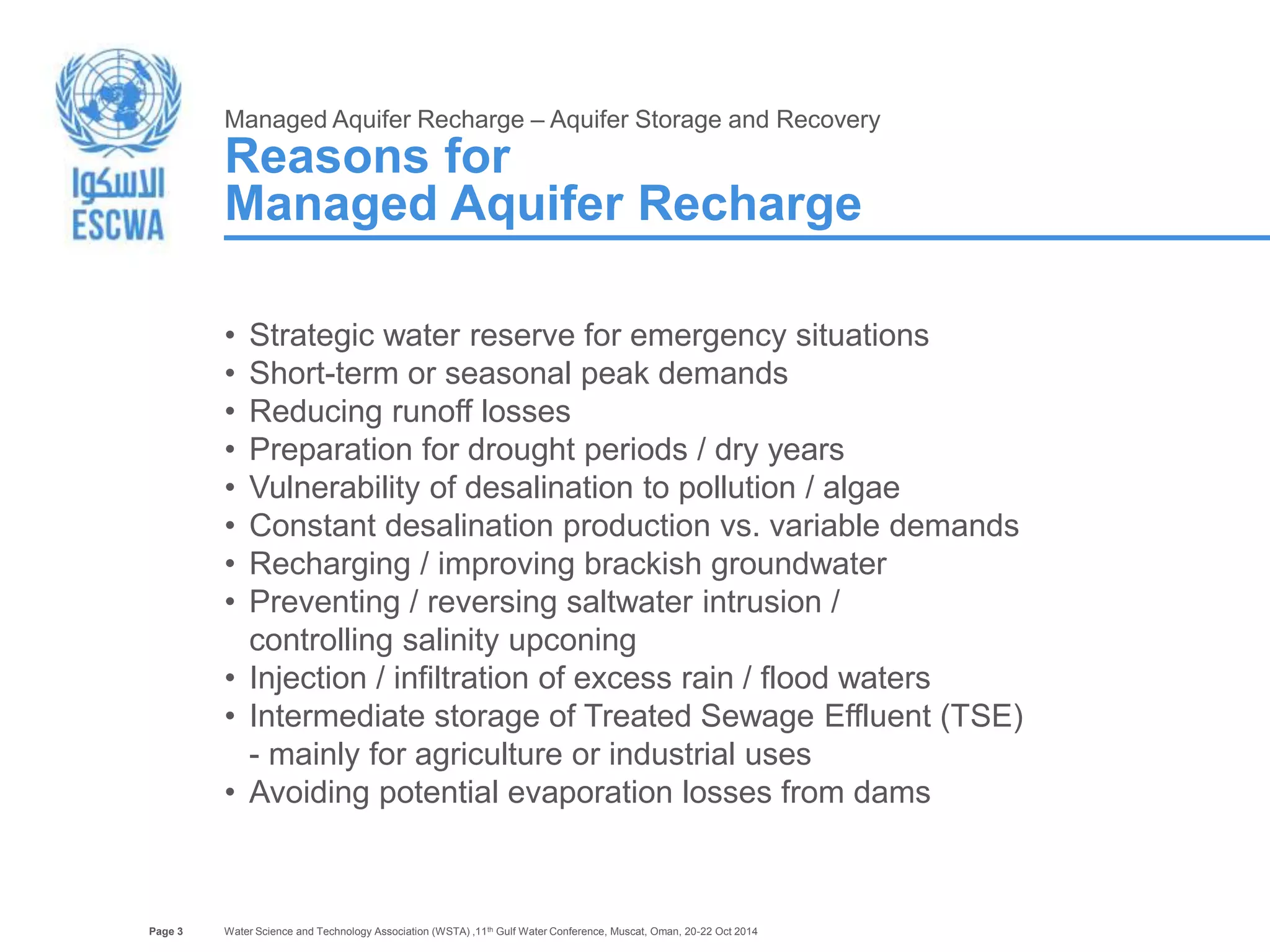The document discusses Managed Aquifer Recharge (MAR) and Aquifer Storage and Recovery (ASR) in the Arab region, highlighting its benefits for water resource management, especially in arid areas. It outlines examples from several countries, challenges faced, and concludes with recommendations for improving cooperation, technical knowledge, and policy frameworks. Emphasis is placed on the need for scientific research, socio-economic assessments, and effective governance to optimize the use of groundwater resources.



![Page 4
Managed Aquifer Recharge – Aquifer Storage and Recovery
Another Attempt for a Definition
Human enhanced and managed
groundwater recharge
[with the purpose of later abstraction or use either
as a fresh groundwater resource or as hydraulic
barrier against other threats such as seawater or
saline water intrusion].
Water Science and Technology Association (WSTA) ,11th Gulf Water Conference, Muscat, Oman, 20-22 Oct 2014](https://image.slidesharecdn.com/20141022rklingbeilmarasrregionalexperiencesneedsfurthercooperationknowledgeexchanges-141023161408-conversion-gate02/75/R-Klingbeil-2014-Managed-Aquifer-Recharge-Aquifer-Storage-and-Recovery-Regional-Experiences-and-Needs-for-Further-Cooperation-and-Knowledge-Exchanges-in-the-Arab-Region-4-2048.jpg)




















